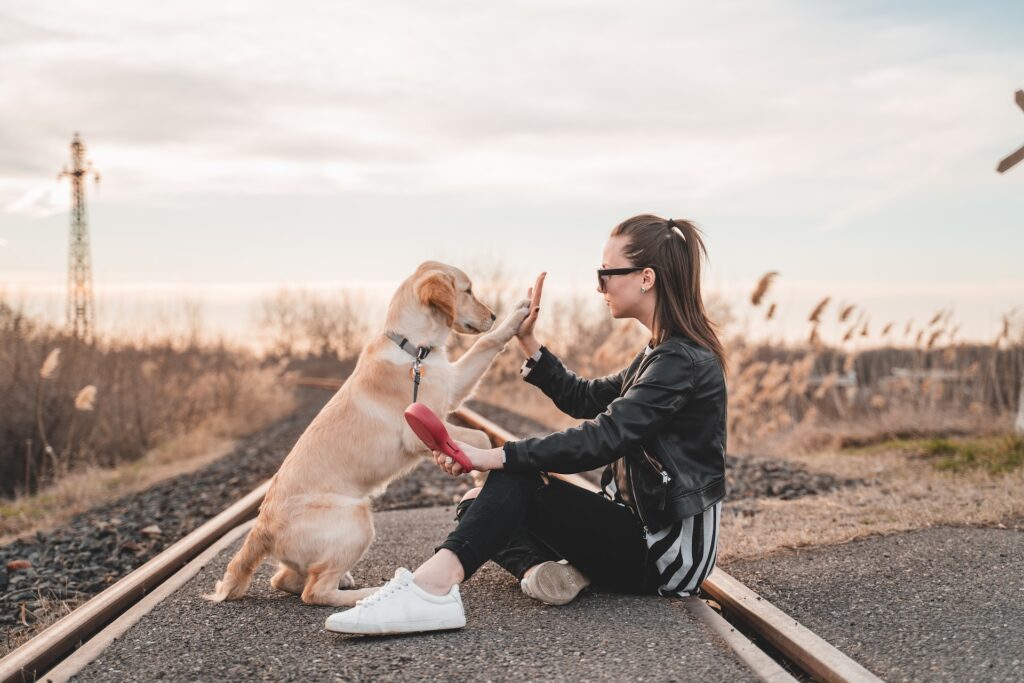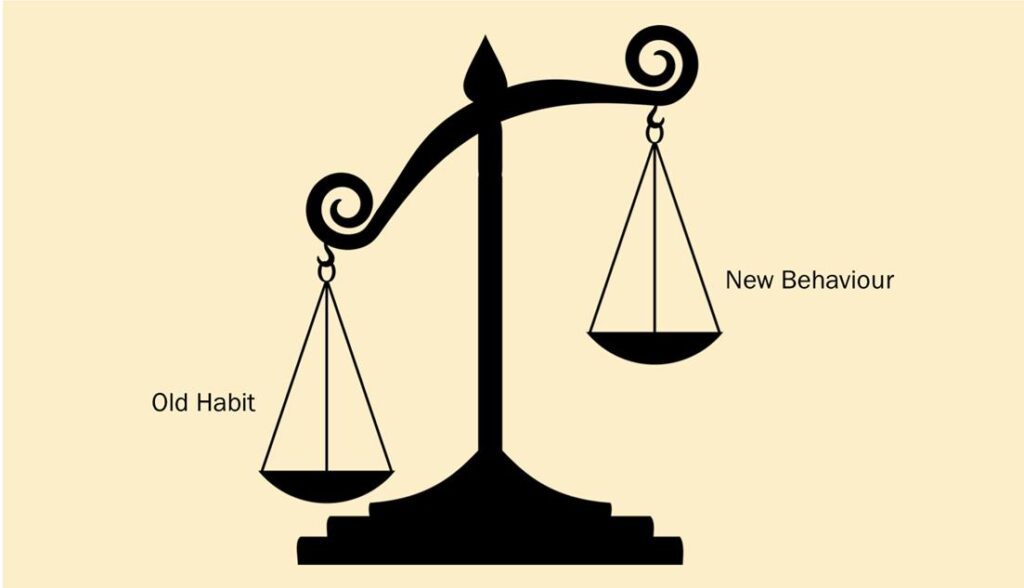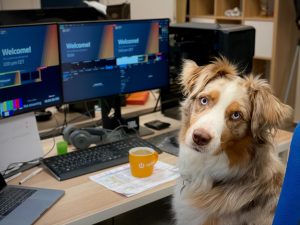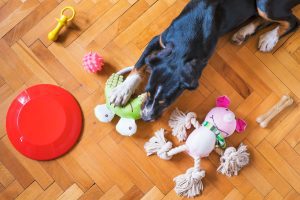Need help with Reactive Dog Behaviour? Join my FREE Facebook support group...
Four stages of the behaviour training process
Changing a behaviour is not the same as teaching new cues. With traditional cue training you can keep adding new skills and tricks for as long as you want to. Changing a behaviour is usually a process that has a beginning, middle and a finish point. Here are the four stages of the behaviour training process.
Stage one – Assessment
The first step in the process is to learn more about the dog, and the behaviour. During this assessment stage you’ll get to know the dog at their best and their worst. Knowing what makes a dog tick is important when it comes to finding ways to motivate them later. That could be toys, food, approval, or something else. The dog will give you plenty of clues as you get to know them.
You’ll watch the problem behaviour a few times too. This helps you to figure out what the behaviour is trying to achieve. It could be more attention, feeling safe, food, space, play, or something else. All problem behaviour is a result of a need not being met, so it’s important to figure out what that is so you can then look for related behaviours. These are just less problematic versions of the original problem behaviour. For example, patrolling a fence fulfils the safety need in the same way as barking at passers-by does. But, most people don’t see running along the fence and peeing against it in strategic places, as a behaviour problem.

Make a plan
At this stage you’ll be outlining a plan to manage the need first. If a dogs food need is threatened, for example, you might try to reduce anxiety in this area by increasing the number of meals, having set meal times, or removing slow feeders. You might also begin gently managing the behaviour to stop it from getting any worse by avoiding certain situations. While this takes effect, you can start breaking down new behaviour sequences into smaller steps, and teaching any new behaviours you’ll need for stage two. This could be a sit/stay in a particular place, some loose lead walking, desensitisation to a sound, or a place command. Plus you can gather new equipment like snuffle mats, long lines, and do your clicker introduction sessions, if needed.
Stage two – Keeping it simple
Once all the pieces are in place, you can proceed to stage two. You’ll start putting everything together in this stage. If you worked on loose lead training in a quiet place, it might be time to try it on a real walk with no distractions. If you introduced a sit/stay at the door, it might be time to include that into your new door answering sequence.
You’ll be keeping things simple at this stage and finding ways to dilute the intensity of situations so your dog can cope better. The aim at this stage is to teach your dog a new behaviour and reward it enough that it starts to become a new habit.
This could be by moving away from something that triggers anxiety, removing distractions altogether, or slowing everything down to reduce over excitement. Dulling noises or switching from a doorbell to a knock could work, as could moving the hoover without turning it on. You might consider asking someone else to do it, if your dog is calmer with them, or even introducing medication to take the edge off.
Do whatever you can to make it easy enough for your dog to successfully rehearse a new behaviour, and get rewarded for it.
You’ll be setting up situations and controlling as much as possible at this stage. It will feel contrived at times, and it might feel like you’re cheating, but once your dog gets the idea you’ll be ready to start leveling up!
Stage Three – Getting back to normal
You’ve kept things light and easy up until now, but now you will start slowly removing filters and getting back to real life situations. Maybe you’ve avoided places with dogs up until now, but now you are ready to try your training in a place where they are quite far away. Maybe you’ve been pretending to leave the house but now you are ready to actually close the door behind you. Or perhaps a your dog has got so good at waiting at the front door you are ready to add the doorbell!
However you made things simple, it’s time to gradually head back to normal. I say gradually, as this is a process that can’t be rushed. It’ll take as long as it takes. Keep an eye on your dogs progress and if they start to wobble then don’t be afraid to go back a step. Continue to monitor and adjust as you work your way through this process.

Stage Four – Habit forming
In the final stage, this whole process will feel much easier. You’ll feel like you have pretty much cracked the problem, but don’t relax yet. You are just at the start of the habit forming stage. Repetition is the goal here, and plenty of rewards. Even though your dog is finding his new behaviour much easier, he still needs you to help him and keep him on track.
He hasn’t forgotten about his old behaviour, and it worked for a long time. You’ll not be able to relax until the old behaviour is long forgotten, and the new one feels more rewarding. So, just keep going and in no time your dog will have a new default behaviour you can depend on – no matter what!
Are you struggling with your dogs behaviour?
Private Dog Behaviour Consultations are currently available in the greater Dundee area and beyond, or via zoom. If you are looking for help solving your dogs behaviour and training problems, then please get in touch!


